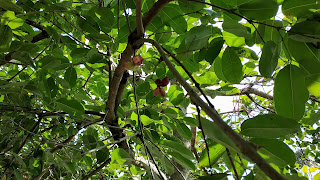Other
names of this plant are Jambolan plum, black plum, jamun, Indian blackberry,
Portuguese plum.
This
tree grows in tropical and subtropical areas and can reach a height of 10-20
meters.
The
mature leaves of the Java Plum tree are green, oval to elliptical in shape, and
are glossy, with a length between 6 and 12 centimeters.
The
young ones have a pinkish color.
The
flowers are fragrant, greenish-white, and grow in clusters.
The
fruits, which are actually berries, are dark purple, edible, and have a single
seed.
 |
| Java Plum, Jambolan, Syzygium cumini |
Although
these fruits resemble the shape of grapes, their taste is different.
In the last 4 decades, there is a lot of evidence in traditional medicine but also scientific, which proves that this plant has benefits.
Gall
extracts from Jamblang leaves are used in medicine, in various foods but also
as a nutraceutical due to their amazing health benefits properties.
Different
parts of the plant such as leaves, bark, and fruits contain active substances
such as anthocyanins, glucosides, ellagic acid, isoquercetin, kaempferol, and
myricetin.
Java Plum leaves are used to treat and prevent diabetes and kidney disease.
These
leaves are also used in rice packaging to prepare Jamblang rice or are added in
various traditional recipes.
This article has an informational character so before beginning an alternative cure with plants presented, you must inform your doctor.
Comments
Post a Comment